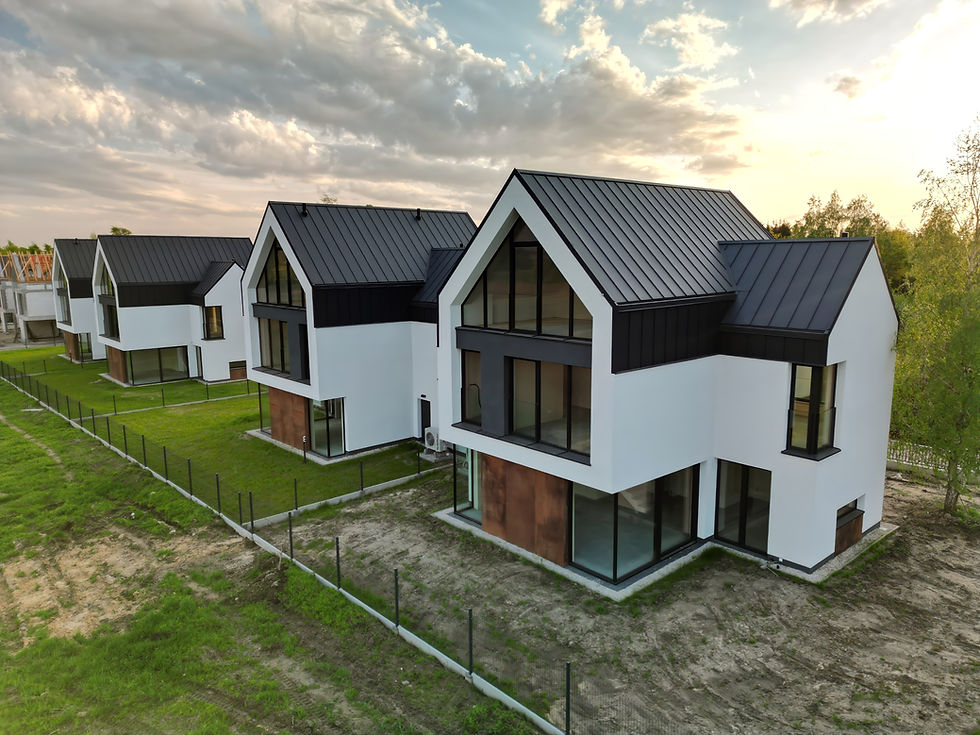Off-grid drainage and energy-efficient design for luxury homes
Two high-spec homes featuring innovative foul and surface water treatment, paired with low-carbon energy systems and high-performance insulation.

%20Strategy%20(7)_edited.png)
Off-grid drainage system
%20Strategy%20(7)_edited.png)
Air source heating
%20Strategy%20(7)_edited.png)
Renewable energy use
Designing for a site with no mains drainage meant we had to think differently. The Groundwater Dynamics system gave us a way to treat and discharge water sustainably without relying on traditional infrastructure. It’s a great example of how civil engineering can adapt to site constraints and still deliver long-term, low-impact solutions.
Ben Norman
Civil Engineer
Lancaster House and York House are two luxury homes that demonstrate how sustainability and innovation can underpin even the most bespoke residential developments.
With no access to mains drainage or watercourses, JMS Engineers designed a bespoke off-grid drainage solution using Groundwater Dynamics technology. This system treats foul and surface water and transfers it to depth via pressure differentials - eliminating the need for conventional discharge points.
The wider design also focused on reducing environmental impact. The properties incorporate air source heat pumps, solar panels, and modern insulation to ensure long-term energy efficiency and lower operational carbon.
This project reflects REFEA’s ethos of sustainable engineering through technical problem-solving and thoughtful, low-carbon design. It was recognised as a finalist in the ProCon Awards.

Focus Areas
REFEA’s work is guided by six core principles that drive sustainable structural and civil engineering - turning practical design decisions into low-carbon outcomes across East Anglia.
Reuse First
Prioritising existing structures and materials to reduce waste and embodied carbon.

Early Design Collaboration
Involving engineers early to embed sustainability from concept to construction.

Low-Carbon Materials
Specifying materials with lower embodied carbon and designing for material efficiency.

Circular Design Thinking
Designing for adaptability, longevity, and future reuse from the outset.
%20Strategy%20(3)-min.png)
Integrated Drainage Solutions
Embedding SuDS into civil engineering for sustainable, climate-resilient developments.

Practical Sustainability
Delivering buildable, cost-conscious solutions that meet real environmental targets.

Sustainable
structures

east anglia
As structural engineers, we have a unique opportunity to influence how the built environment responds to the climate crisis. Reuse isn't just about saving materials - it's about rethinking value, preserving what works, and designing with long-term resilience in mind. Through REFEA, we hope to make reuse a more practical and achievable option on projects across East Anglia by sharing knowledge, highlighting viable approaches, and supporting early-stage design decisions.
Mark Weston
Structural Engineer, JMS Engineers
Knowledge is key to sustainable change. Explore our latest insights and technical resources:

Path to a Low-Carbon Built Environment
The built environment contributes nearly 40% of global carbon emissions, much of it through construction and materials. In East Anglia, reducing embodied carbon is critical to meeting sustainability goals. By reusing structures, designing efficiently, and integrating low-impact civil solutions, we can reshape how the region builds - and lead the way towards a net zero future.


%20Strategy%20(1)_edited.png)













